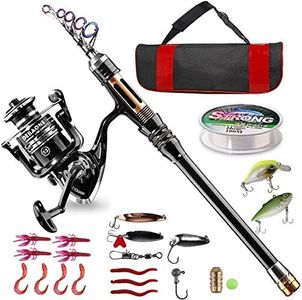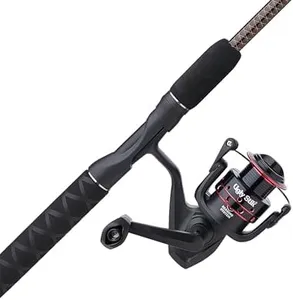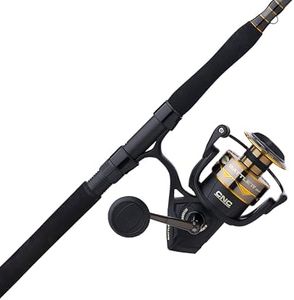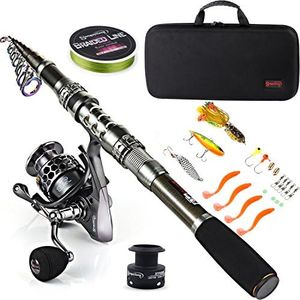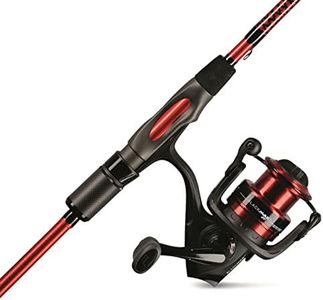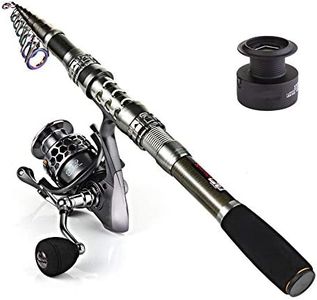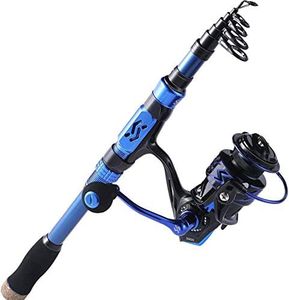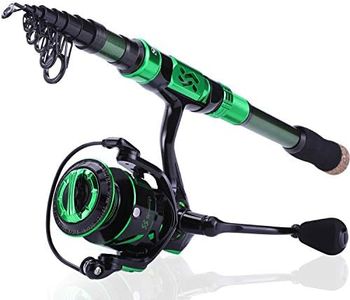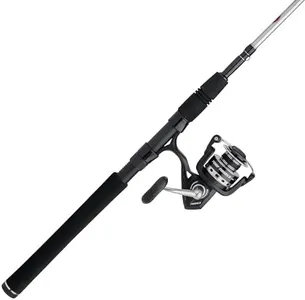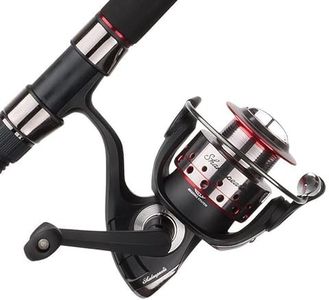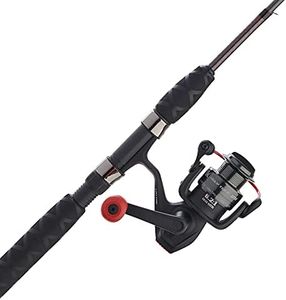We Use CookiesWe use cookies to enhance the security, performance,
functionality and for analytical and promotional activities. By continuing to browse this site you
are agreeing to our privacy policy
10 Best Saltwater Spinning Combo
From leading brands and best sellers available on the web.By clicking on a link to a third party's website, log data is shared with that third party.
Buying Guide for the Best Saltwater Spinning Combo
Choosing a saltwater spinning combo—meaning a matched rod and reel designed specifically for saltwater fishing—can be daunting. Saltwater environments are harsh on gear, and the fish can get much bigger and stronger than what you’d find in freshwater. The best approach is to start by considering where and how you will be fishing (from a pier, the surf, or a boat) and the size of fish you expect to target. Make sure to focus on combinations designed for saltwater use as they offer corrosion resistance and are built tough. Pay attention to size, materials, and comfort to ensure you buy what fits your needs best.Rod LengthRod length refers to how long the fishing rod is from the butt to the tip. This is important because it affects your casting distance, accuracy, and leverage when fighting fish. Shorter rods (6–7 feet) offer better control and are great for fishing from boats or piers where space is tight, while longer rods (8–10 feet or more) allow for longer casts, which are handy for surf fishing. Choose a shorter rod if you value control and are fishing in close quarters, and pick a longer rod if you need to cast far or need extra leverage to reel in big fish from the shore.
Rod PowerRod power describes how much pressure is needed to bend the rod. It ranges from light, medium, to heavy power. This spec is critical because it should match the size of the fish you intend to catch and the weight of the lures you'll be using. Light power is best for smaller fish and lighter tackle, while heavy power is necessary for larger species and bigger lures or bait. Think about your target fish: if you’re going after small inshore fish, light or medium power is fine. For big game or offshore fishing, heavy power is the way to go.
Rod ActionRod action refers to how quickly the rod returns to its original position after being bent, and where it bends along its length. Fast action rods bend mostly at the tip and are more sensitive, making them great for feeling light bites and setting hooks quickly. Slow action rods bend throughout their length, which can provide more casting distance and a softer touch when fighting fish. If you need quick response for setting hooks, go with a fast action rod. If your focus is on casting further and providing a cushion for lighter lines, a slower action rod may suit you better.
Reel SizeReel size is often indicated by numbers (for example, 3000 or 5000) and tells you how much fishing line the reel can hold and what kind of line it's designed to use. Larger reels hold more line and are suitable for bigger fish and heavier line, while smaller reels are lighter and intended for lighter tackles and smaller fish. Match your reel size to your rod and the type of fishing you’ll be doing. For inshore and smaller fish, a 2500–4000 size reel is often enough. For larger, stronger fish, a 5000 or bigger reel is better.
Gear Material & Corrosion ResistanceThis refers to what the rod and reel are made from, specifically their ability to resist saltwater corrosion. Materials like graphite, aluminum, and stainless steel are common in saltwater gear because they are strong and don't rust easily. If you fish in saltwater, always choose a combo labelled as saltwater-ready, which means it’s made with corrosion-resistant parts. This is essential because saltwater is harsh and can ruin regular freshwater gear very quickly. Check for features like sealed bearings and anodized finishes for extra durability.
Line CapacityLine capacity indicates how much fishing line the reel can hold, both in length and in line weight (strength). This is important for handling long, strong runs from big saltwater fish. The larger the capacity, the longer and heavier the line you can use, which is key for bigger or more powerful fish. Make sure your combo can handle at least as much line as you expect to use for your usual fishing spots—if you fish from the surf or target big species, look for a combo with higher line capacity.
Combo Balance and ComfortThis means how well the rod and reel work together and how comfortable they are to hold and use, especially for long periods. A good combo feels balanced, not too heavy at one end, and will reduce fatigue. Check the grip material (like EVA foam or cork), how the handle fits your hand, and the overall weight. If you’ll be fishing for hours or moving around a lot, make sure the combo feels natural—pick up the rod and reel if possible to test how it feels before buying.
